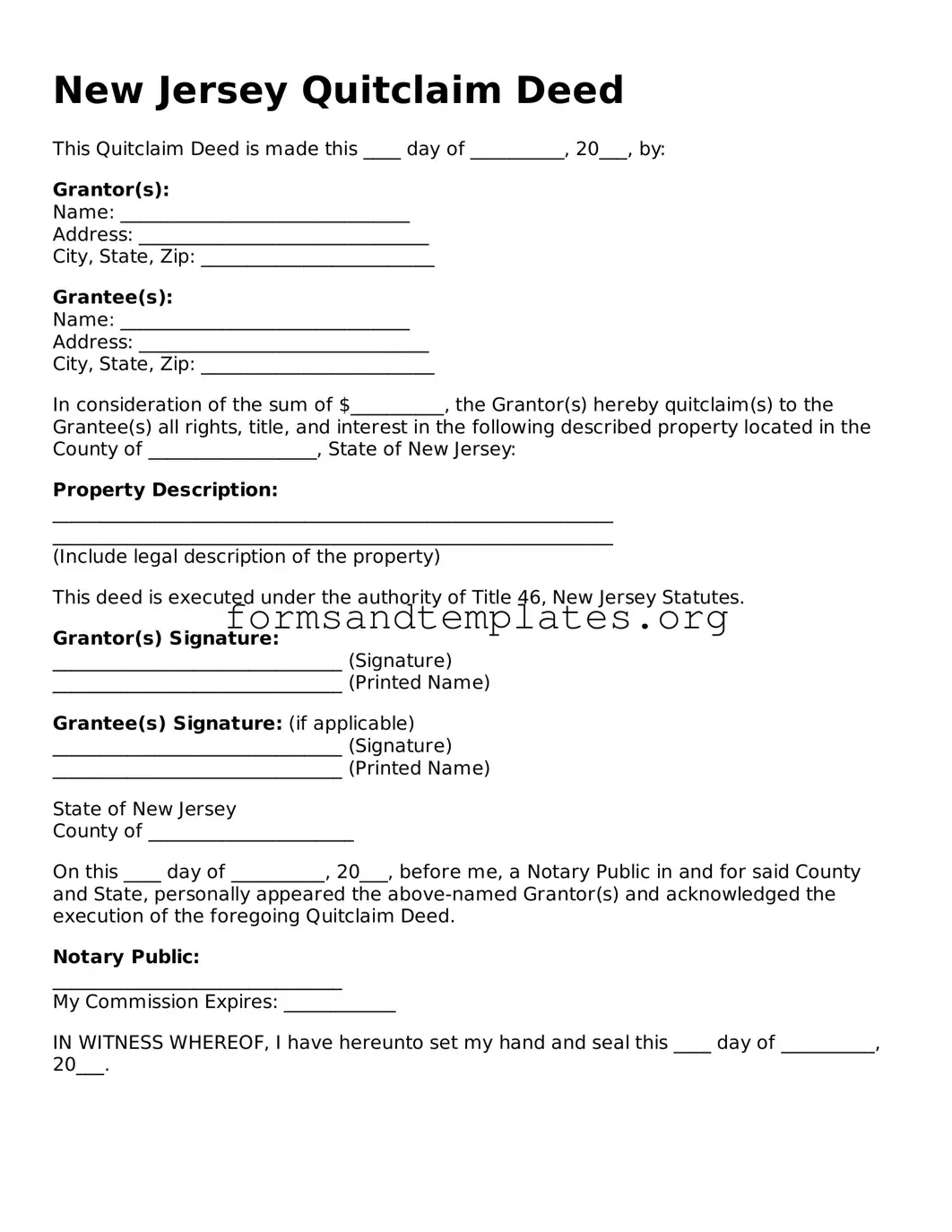New Jersey Quitclaim Deed
This Quitclaim Deed is made this ____ day of __________, 20___, by:
Grantor(s):
Name: _______________________________
Address: _______________________________
City, State, Zip: _________________________
Grantee(s):
Name: _______________________________
Address: _______________________________
City, State, Zip: _________________________
In consideration of the sum of $__________, the Grantor(s) hereby quitclaim(s) to the Grantee(s) all rights, title, and interest in the following described property located in the County of __________________, State of New Jersey:
Property Description:
____________________________________________________________
____________________________________________________________
(Include legal description of the property)
This deed is executed under the authority of Title 46, New Jersey Statutes.
Grantor(s) Signature:
_______________________________ (Signature)
_______________________________ (Printed Name)
Grantee(s) Signature: (if applicable)
_______________________________ (Signature)
_______________________________ (Printed Name)
State of New Jersey
County of ______________________
On this ____ day of __________, 20___, before me, a Notary Public in and for said County and State, personally appeared the above-named Grantor(s) and acknowledged the execution of the foregoing Quitclaim Deed.
Notary Public:
_______________________________
My Commission Expires: ____________
IN WITNESS WHEREOF, I have hereunto set my hand and seal this ____ day of __________, 20___.
